Bortezomib-induced painful peripheral neuropathy: an electrophysiological, behavioral, morphological and mechanistic study in the mouse
- PMID: 24069168
- PMCID: PMC3772181
- DOI: 10.1371/journal.pone.0072995
Bortezomib-induced painful peripheral neuropathy: an electrophysiological, behavioral, morphological and mechanistic study in the mouse
Abstract
Bortezomib is the first proteasome inhibitor with significant antineoplastic activity for the treatment of relapsed/refractory multiple myeloma as well as other hematological and solid neoplasms. Peripheral neurological complications manifesting with paresthesias, burning sensations, dysesthesias, numbness, sensory loss, reduced proprioception and vibratory sensitivity are among the major limiting side effects associated with bortezomib therapy. Although bortezomib-induced painful peripheral neuropathy is clinically easy to diagnose and reliable models are available, its pathophysiology remains partly unclear. In this study we used well-characterized immune-competent and immune-compromised mouse models of bortezomib-induced painful peripheral neuropathy. To characterize the drug-induced pathological changes in the peripheral nervous system, we examined the involvement of spinal cord neuronal function in the development of neuropathic pain and investigated the relevance of the immune response in painful peripheral neuropathy induced by bortezomib. We found that bortezomib treatment induced morphological changes in the spinal cord, dorsal roots, dorsal root ganglia (DRG) and peripheral nerves. Neurophysiological abnormalities and specific functional alterations in Aδ and C fibers were also observed in peripheral nerve fibers. Mice developed mechanical allodynia and functional abnormalities of wide dynamic range neurons in the dorsal horn of spinal cord. Bortezomib induced increased expression of the neuronal stress marker activating transcription factor-3 in most DRG. Moreover, the immunodeficient animals treated with bortezomib developed a painful peripheral neuropathy with the same features observed in the immunocompetent mice. In conclusion, this study extends the knowledge of the sites of damage induced in the nervous system by bortezomib administration. Moreover, a selective functional vulnerability of peripheral nerve fiber subpopulations was found as well as a change in the electrical activity of wide dynamic range neurons of dorsal horn of spinal cord. Finally, the immune response is not a key factor in the development of morphological and functional damage induced by bortezomib in the peripheral nervous system.
Conflict of interest statement
Figures



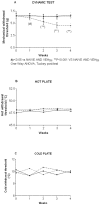

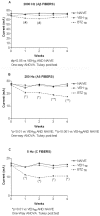
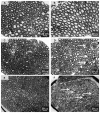



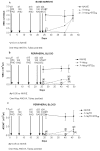


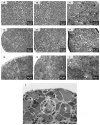
Similar articles
-
Bortezomib treatment produces nocifensive behavior and changes in the expression of TRPV1, CGRP, and substance P in the rat DRG, spinal cord, and sciatic nerve.Biomed Res Int. 2014;2014:180428. doi: 10.1155/2014/180428. Epub 2014 Apr 27. Biomed Res Int. 2014. PMID: 24877063 Free PMC article.
-
Bortezomib-induced painful neuropathy in rats: a behavioral, neurophysiological and pathological study in rats.Eur J Pain. 2010 Apr;14(4):343-50. doi: 10.1016/j.ejpain.2009.07.001. Epub 2009 Aug 19. Eur J Pain. 2010. PMID: 19695912
-
The Association of Neuronal Stress with Activating Transcription Factor 3 in Dorsal Root Ganglion of in vivo and in vitro Models of Bortezomib- Induced Neuropathy.Curr Cancer Drug Targets. 2019;19(1):50-64. doi: 10.2174/1568009618666181003170027. Curr Cancer Drug Targets. 2019. PMID: 30289077
-
Pathological Mechanisms of Bortezomib-Induced Peripheral Neuropathy.Int J Mol Sci. 2021 Jan 17;22(2):888. doi: 10.3390/ijms22020888. Int J Mol Sci. 2021. PMID: 33477371 Free PMC article. Review.
-
Bortezomib-induced peripheral neuropathy in multiple myeloma: a comprehensive review of the literature.Blood. 2008 Sep 1;112(5):1593-9. doi: 10.1182/blood-2008-04-149385. Epub 2008 Jun 23. Blood. 2008. PMID: 18574024 Review.
Cited by
-
Drug screening in zebrafish larvae reveals inflammation-related modulators of secondary damage after spinal cord injury in mice.Theranostics. 2023 Apr 23;13(8):2531-2551. doi: 10.7150/thno.81332. eCollection 2023. Theranostics. 2023. PMID: 37215570 Free PMC article.
-
Bortezomib alters sour taste sensitivity in mice.Toxicol Rep. 2017 Mar 10;4:172-180. doi: 10.1016/j.toxrep.2017.03.003. eCollection 2017. Toxicol Rep. 2017. PMID: 28959638 Free PMC article.
-
Microtubule-Targeting Agents Eribulin and Paclitaxel Differentially Affect Neuronal Cell Bodies in Chemotherapy-Induced Peripheral Neuropathy.Neurotox Res. 2017 Jul;32(1):151-162. doi: 10.1007/s12640-017-9729-6. Epub 2017 Apr 8. Neurotox Res. 2017. PMID: 28391556 Free PMC article.
-
Chemotherapy-induced neuropathies-a growing problem for patients and health care providers.Brain Behav. 2016 Oct 26;7(1):e00558. doi: 10.1002/brb3.558. eCollection 2017 Jan. Brain Behav. 2016. PMID: 28127506 Free PMC article. Review.
-
Peripheral Neuropathy under Oncologic Therapies: A Literature Review on Pathogenetic Mechanisms.Int J Mol Sci. 2021 Feb 17;22(4):1980. doi: 10.3390/ijms22041980. Int J Mol Sci. 2021. PMID: 33671327 Free PMC article. Review.
References
-
- Curran MP, McKeage K (2009) Bortezomib: a review of its use in patients with multiple myeloma. Drugs 69: 859-888. doi:10.2165/00003495-200969070-00006. PubMed: 19441872. - DOI - PubMed
-
- Mahindra A, Laubach J, Raje N, Munshi N, Richardson PG et al. (2012) Latest advances and current challenges in the treatment of multiple myeloma. Nat Rev Clin Oncol 9: 135-143. doi:10.1038/nrclinonc.2012.15. PubMed: 22349016. - DOI - PubMed
-
- Tobinai K (2007) Proteasome inhibitor, bortezomib, for myeloma and lymphoma. Int J Clin Oncol 12: 318-326. doi:10.1007/s10147-007-0695-5. PubMed: 17929113. - DOI - PubMed
-
- Kennedy B, Gargoum F, Bystricky B, Curran DR, O’Connor TM (2010) Novel agents in the management of lung cancer. Curr Med Chem 17: 4291-4325. doi:10.2174/092986710793361289. PubMed: 20939812. - DOI - PubMed
Publication types
MeSH terms
Substances
Grants and funding
LinkOut - more resources
Full Text Sources
Other Literature Sources
Medical

